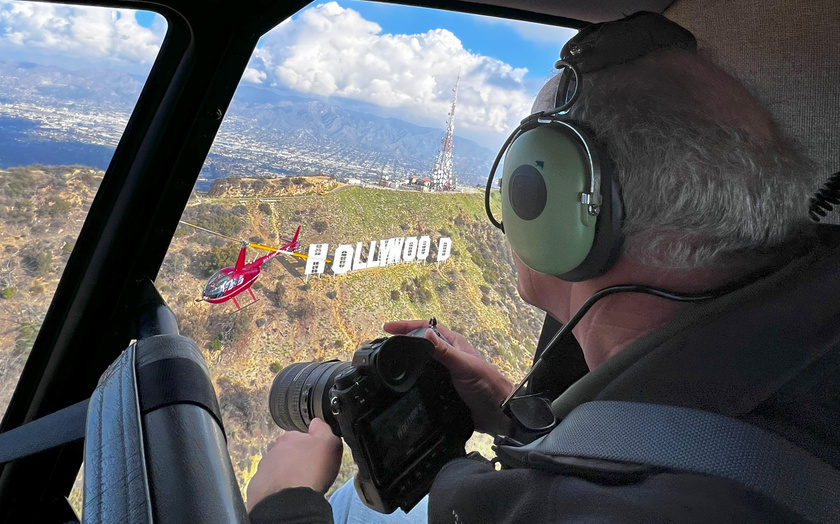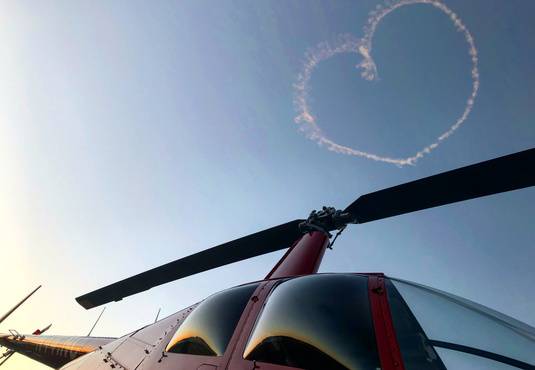Nothing boosts the appeal of a photo like a change in perspective. Whether you’re a professional photographer, hobbyist, artist or social media maven looking for a way to boost links, shares and following, taking your photos from a whole new perspective is how you differentiate your work from the masses. And what better way to do that than from a helicopter?
Aerial Photography: Helicopter vs Drone
Hiring a helicopter to help you capture those unique shots is easy and affordable, while offering you all the flexibility you need for your project. We can fly doors on or off, allowing you to sit in the front or back, and are legally allowed to operate at a large altitude range. With a helicopter, you can bring a selection of cameras and lenses, allowing you flexibility in how you take your photos, and with the speed of a helicopter, you can shoot several subjects in the same flight, saving your own valuable time.
Drones, while they can be useful for specific needs, drones do have their limitations. Regulations require drone operators be FAA-licensed pilots and the drone cannot fly above 400 feet, if you’re using your photos for commercial gain. And a blog or website where you make money on ads and by sending followers from your social media is considered commercial gain.
What’s more, most off-the-shelf drones carry wide-angle lens micro cameras like GoPro, limiting your control over the image. Higher end drones and camera gimbals designed to carry a professional camera sell for tens of thousands of dollars, and you’re still limited by the FAA-imposed 400-foot altitude.
Hiring Group 3 Helicopters for your aerial photography means you can bring all your cameras, pick your altitude, let us know how long you can fly and leave the rest to us.
Group 3 Aviation’s R44 Helicopter
The R44 is the ideal aerial photography platform for serious photographers. First, it is less expensive than the larger aircraft, allowing you to get the most out of your shooting investment. It’s also small enough to allow you to sit in the back seat, and with both doors off, shoot alternatively out each side while still safely strapped into your seat. The front doors can stay on, offering you a wind break when flying between your photo subjects.
What’s more, the helicopter only has two blades, reducing chances a blade will end up in your photos.
Before every flight, you’ll meet with your pilot to go over what you’d like to capture from the helicopter. Your pilot will do everything allowed by FAA regulations and safety practices to help get your shot. However, the pilot is also responsible for assuring your safety and that of the flight. Any concerns will be shared and we’ll work with you to mitigate any concerns to help you get your photos safely and within legal requirements.
Tips for Ideal Helicopter Photography
Timing
Consider the orientation of your subject and the time of day. If you’re shooting a mountain range or building facing west, afternoon or even golden hour may be the best time to fly. A fault line may show the best definition from the air mid-day, or if you’re going for dramatic effect, early morning or late evening to accentuate shadows.
Camera settings
Aerial photographers regularly recommend shutter speeds between 1/500 and 1/1000. In calm conditions, 1/500 can be ideal. However, 1/1000 may be the best bet depending on your focal length. Longer focal length = faster shutter speeds. Think about focal length before the flight. A very wide focal length will make it difficult to keep parts of the helicopter, mainly the blades, out of the image. Shooting in burst mode can help increase chances some shots do not have blades, especially if you’re flying in a two-blade helicopter. In most cases, f/5.6 will work fine, but, depending on focal length, be ready to switch to f/8 or f/11 to attain the brightness you desire. Auto settings sometimes work, but be ready to use manual to increase the chances of capturing the ideal shot.
Doors Off
When the doors are off, it can get windy, and even cold. Dress appropriately to stay warm, and tie your hair back if it isn’t too short to blow in your eyes.
Also, when the doors are off, extra items that are not strapped down are often not allowed. Consider having your cameras on straps around your neck, add straps to your sunglasses if you choose to bring them, and don’t bring bags, and plan to have an empty memory card as you’ll not want to see a full one fly from the aircraft when you attempt to change it out mid-flight.
Book Today
We’re here 24/7 to help you book your ideal photo flight. Give us a call today to discuss what you’d like to capture and how we can help you do just that, all within your deadline and budget.



